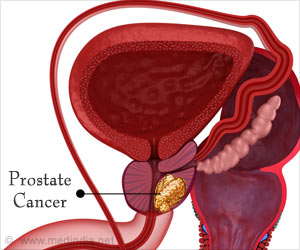IQ loss in LMICs (low and middle-income countries) due to lead exposure is nearly 80% higher than a previous estimate, while deaths from cardiovascular disease are six times higher.
The global cost of lead exposure in 2019 was estimated to be US$6 trillion, equivalent to 7% of global GDP. In LMICs, it was equivalent to more than 10% of GDP, or twice as high as in High-Income Countries (HICs).
Advertisement
The overwhelming majority of health impacts and economic costs from lead exposure are in LMICs, highlighting an urgent need for improved monitoring of exposure and exposure source identification, accompanied by relevant legislative responses and public health policies(1✔ ✔Trusted Source
Global health burden and cost of lead exposure in children and adults: a health impact and economic modelling analysis
Go to source
).
Lead Toxicity – Threat to Raise Cardiovascular Disease and IQ Loss
The study is the first to estimate lead exposure’s global health burden and cost in terms of IQ loss and deaths from cardiovascular disease in both LMICs and HICs.
Exposure to lead can seriously harm young children’s health, including damage to the brain, slowed development, and learning difficulties. In adults, lead exposure can increase people’s risk of cardiovascular disease – which accounts for almost 95% of deaths linked to lead exposure – as well as chronic kidney disease and learning disabilities.
Despite the fact that lead-containing petrol has been phased out around the world, exposure to the toxic metal still poses major global health risks, especially in LMICs. Key sources of exposure include lead acid battery recycling, metal mining, food, soil and dust, leaded paint, cookware from recycled materials, lead-glazed pottery and ceramics, spices, toys, cosmetics, electronic waste, fertilizers and cultured fish feed.
The presence of each of these sources varies greatly across countries, and each source’s contribution to population blood lead levels (BLLs) needs to be better understood in most LMICs in order to develop effective exposure mitigation plans.
Lead author Bjorn Larsen said: “We know that lead exposure has continued to cause huge impacts on human health, despite most countries banning the use of leaded petrol more than 20 years ago. Efforts to address the impacts of lead exposure must reflect that these are as significant as those posed by PM2.5 outdoor ambient and household air pollution.”
No previous research had assessed the global health impacts and economic costs of IQ loss in young children and cardiovascular disease deaths in adults caused by exposure to lead. Previous research on IQ loss in children was limited to LMICs and based on estimates of BLLs – the most common indicator of exposure – more than a decade old. Previous global studies of cardiovascular disease deaths linked to lead exposure had looked only at those caused by increased blood pressure.
The authors of the new study used BLL estimates from the Global Burden of Disease (GBD) 2019 study to estimate the global health impacts and costs of lead exposure. This provides estimated average BLLs in 183 LMICs and HICs, accounting for 99.9% of the world’s population.
Assessing Lead Exposure at Molecular Level
The average BLL in LMICs was 4.6 μg/dL, compared with 1.3 μg/dL in HICs. People in North America and in Europe and Central Asia had the lowest average BLLs, with the highest among people in South Asia, the Middle East and North Africa, and Sub-Saharan Africa.
They analyzed the data using a health impact model that estimated lead exposure’s effect on deaths from cardiovascular disease caused by factors other than high blood pressure, including damages to the heart and arteries (e.g., atherosclerosis) and increased incidence of stroke.
A model was also used to estimate global IQ loss from lead exposure in the entire child population aged 0-4 years and to estimate the cost of cardiovascular disease deaths and IQ loss due to lead exposure.
The analysis estimates that lead exposure contributed to 5.5 million deaths from cardiovascular disease globally in 2019, or 30% of all cardiovascular disease deaths. This is more than six times higher than the GBD 2019 estimate of 850,000 CVD deaths from lead exposure.
Of the 5.5 million deaths from lead exposure, 90% were in LMICs. As the analysis did not include deaths from high blood pressure – and because lead exposure also increases the risk of dying from causes other than cardiovascular disease – the true number of deaths linked to lead exposure may be substantially higher.
The analysis also suggests that lead exposure caused the loss of 765 million IQ points in children under five years old in 2019, with 95% of the losses among children in LMICs. During their first five years of life, children in LMICs on average each lose 5.9 IQ points from lead exposure. The authors estimate this can reduce these children’s total lifetime income by as much as 12%.
Economic impact of Lead Poisoning
Analysis of the economic impact of lead exposure indicates it might have cost US$6 trillion worldwide in 2019, equivalent to 7% of global GDP. The cost was more than 10% in LMICs compared to 5% in HICs, due to higher BLLs in LMICs. The World Bank estimated that the combined cost of PM2.5 outdoor ambient and household air pollution in 2019 was equivalent to 6% of global GDP.
More than three-quarters of the estimated economic cost (77%) of lead exposure was associated with cardiovascular disease deaths, with around a quarter (23%) due to predictions of lower future income caused by IQ loss.
The authors acknowledge some limitations to their study. These mainly revolve around the accuracy of global estimates of BLLs, as nationwide measurements are not available for many countries, particularly LMICs. The BLL estimates in the GBD 2019 study are based on a combination of 554 studies in 84 countries from 1970 to 2017 and the modelling of BLLs.
Reference :
- Global health burden and cost of lead exposure in children and adults: a health impact and economic modelling analysis – (https://www.thelancet.com/journals/lanplh/article/PIIS2542-5196(23)00166-3/fulltext)
Source: Eurekalert



